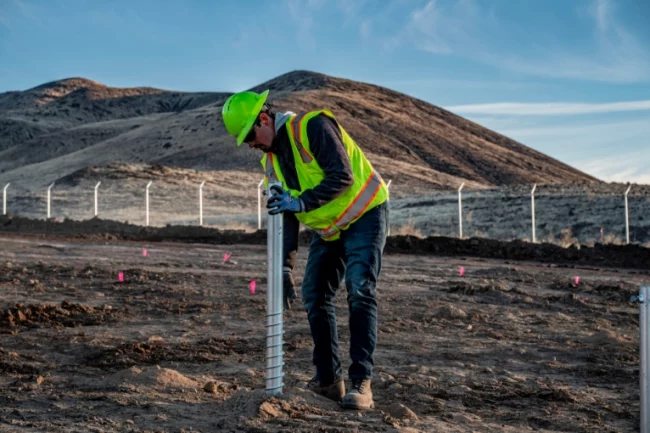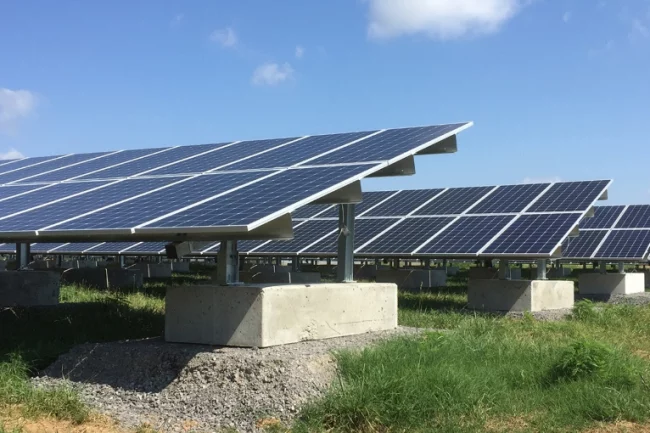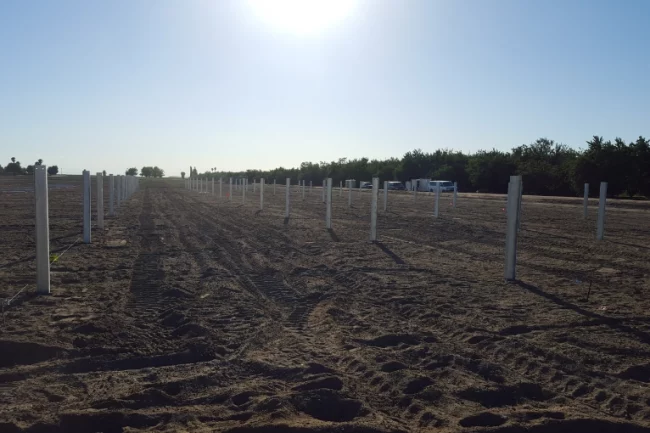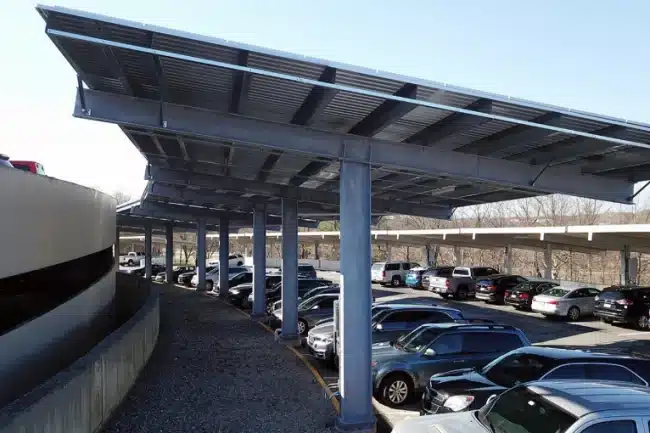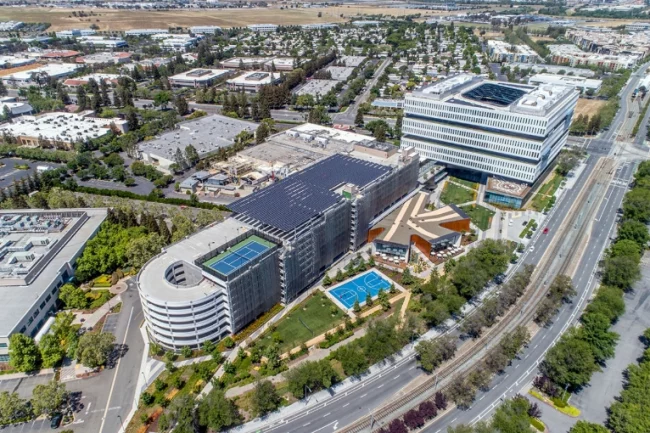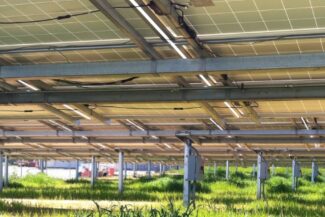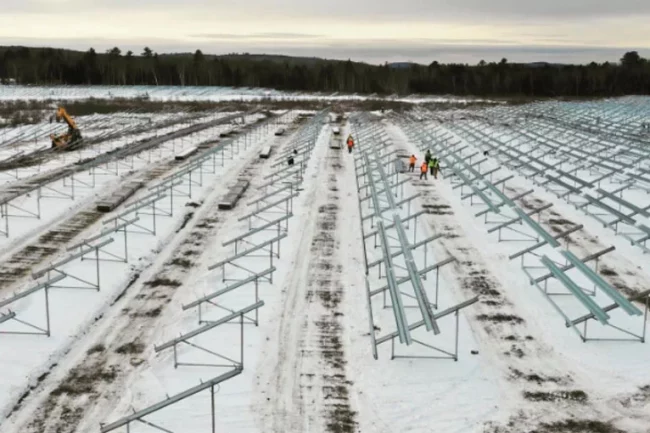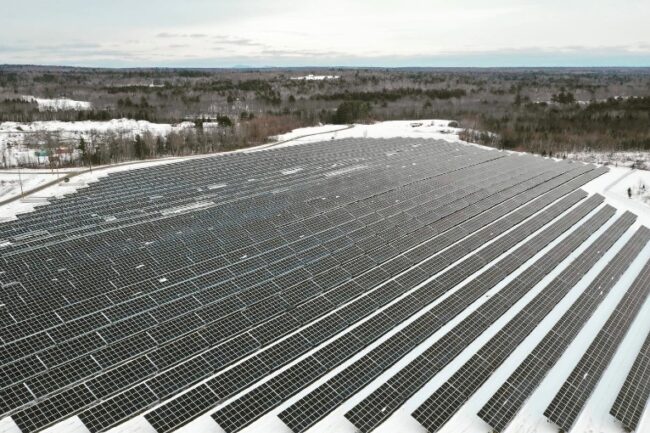This article first appeared in Solar Builder Mag
TerraTrak is the first single-axis tracker package built specifically for performance and returns in challenging conditions.
Earlier this year, Gibraltar Industries acquired TerraSmart, the top provider of screw-based, ground-mount solar racking technology. For this edition of the Tracker Tracker, we wanted to review the top attributes of its TerraTrak + PeakYield system – the first single-axis tracker package built specifically for performance and returns in challenging conditions. Developers can turn unusable land into valuable assets with this ground-breaking system suitable in high slopes, environmentally sensitive land as well as refusal and frost susceptible soils. Here are five key features that make it possible.
1) Structural redesign. Flat land comes at a price premium, but hilly, rocky or other challenging sites offer higher-margin opportunities. To target these sites, TerraSmart redesigned the typical tracker structure to specifically account for ground screw foundations.
“There’s never been a tracker that’s been top to bottom designed for the ground screw and its unique characteristics,” says Chase Anderson, senior design engineer. “I’ve seen others that have attempted to use other foundation types in the same soil conditions but usually they require some sort of additional bracketry or mechanical components to achieve the slopes or handle the uneven terrain that we typically can handle with just our standard offering.”
The TerraSmart team reports it is the first and only single-axis tracker to eliminate 100% refusal risks that are usually assumed by the developers. It minimizes land grading and other civil works, cutting construction costs and keeping schedules tight and comes with flexible with slope tolerances (up to 20% N – S accounts) for misalignments in the field.
2. Streamlined part count. Several engineering teams worked concurrently on designs at its Fort Myers, Fla., headquarters for over four years to get this right, and along the way, several unique efficiencies were created. The durability and flexibility is achieved with fewer parts thanks to patent-pending self-locking hardware and clips and screwless module fastening and ground. The bushings went through the most critical design process.
“We had many versions that we tested and ultimately took the best value of each design from each team and combined into one bushing that’s the strongest in the industry,” Anderson said. “We have 10 years of experience in undulating and difficult terrain with difficult subsurface conditions, and we’ve been out there installing and picking up efficiencies in the field and noted it in our design methodology around the tracker – where we’d need that adjustability based on when the screw goes through a rock and maybe it moves and what those tolerance levels are.”
3. Robust communications. TerraSmart also engineered all of the tracking, control, communications and monitoring technology in-house. Its PeakYield control technology is an advanced performance monitoring and controls architecture that boosts real-time visibility of trackers in the field, maximizing energy yield and financial returns.
“With our algorithm, we have a process that captures the leg height after it’s built, so when the apron gets set we capture where it is,” says Brent Franks, VP of information technology. That data point heads into the cloud, which spits out a model for the optimal position to maximize energy production at that height and position for the year, accounting for rows that are vertically higher than one’s beside them. “That allows us to perform back tracking and then can feed into our row controllers what the intended angle is for each part of the day and not cause shading for a row that might be lower because of the undulating terrain.”
4. On-site flexibility. The other thing about arduous solar sites is they can require weird layouts, like shorter rows shoved into nooks and crannies. That consideration led them to a two-high module design, thinking they could cram more modules into those awkward areas for a better production gain.
“With a shorter row you still have the same number of modules as a single high but half the length” Anderson said. “It helps reduce civil work too because vertical adjustability limits are reduced as the tracker length is decreased. If grade changes 2 or 3 feet within the length of a two-high tracker, it might have been 5 or 6 feet in single high tracker depending on the job site.”
The TerraSmart team also works side-by-side with EPC partners to realize all of these value propositions, minimize risks and accelerate schedules. Designers and engineers collaborate to ensure systems meet cost and production goals up-front. Civil works team handles fencing, building access roads, grading, paving, storm drainage, trenching and stormwater pollution prevention plan (SWPPP). Survey crews use cutting-edge technologies to increase speed, accuracy and safety. Certified drillers operate cutting edge rock drilling machines to handle the most arduous sub-surface conditions.
5. On-going reliability. Add it all up, and the system is built to be bankable and reliable in extreme weather found in these more extreme environments – both in structure and communication.
The A-frame design distributes wind loads evenly across all foundations when at stow, (the hard stop) increasing stability during weather events. The system is backed by comprehensive, third party wind tunnel analysis. It is tested for tracker resonance and vortex lock-in, and comes with a bankability study by DNV-GL covering its reliability in unreliable conditions.
Knowing they will be installing on hills, in valleys, etc., they built a mesh network with an in-house team that has previous experience building mesh networks in home security and automation.
“We learned early on the difficulties that mesh networking presented,” Franks says. “From the tracker perspective, we heard stories that as the row moves, one would lose communication with the network controller and things like that so we spent a lot of time beefing up that mesh communication process and how it all worked. We heard from some customers that they were only able to get to 100 rows per network controller, and so far, all of the sites we’ve built are able to double that density to about 200. The issues that our customers had seen on other solutions, with panels causing interface issues or electronic interference, we haven’t run into any of that based on how we have optimized the networking and security encryption around that.”
Over a project’s lifetime, TerraTrak is proactive providing real time data feeds. Technologically advanced, an app pushes email/text notifications immediately when issues arise, and remote firmware updates ensure the system stays up to date with the latest software enhancements and predictive analysis. The complete hardware and software package reduces complexity from an ownership perspective. Vertically integrating structural and electronic hardware with software ensures everything works together, while wrapping customer-support under one umbrella.
And now, that umbrella is ever larger. To this point, the Gibraltar’s Renewable Energy group has thrived as individual category leaders, but the company is even more excited about the collective potential to work from upstream to downstream as a true end-to-end solar partner, no matter the project type or terrain. In merging strengths from market leaders like TerraSmart, RBI Solar and SolarBOS, combined with smart new project design software from Sunfig, Gibraltar is able to serve all sectors in the growing utility, community, and C&I solar market, helping make solar energy readily available anywhere.

